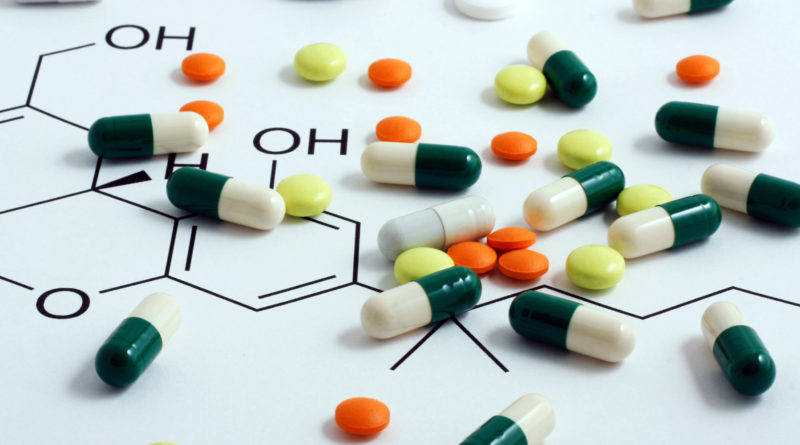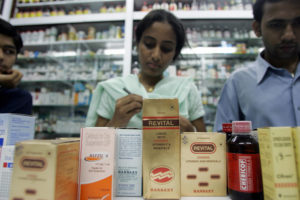Rising Concerns
The recent government advisory to the doctors for prescribing generic medicines is expected to bring down drug prices and expand access to affordable health solutions. But in the absence of an international standard drug regulatory mechanism, and enforceable assurance about quality through bioequivalence tests and other globally mandated parameters, the generics-only diktat may not turn out to be a practical idea
By Abhigyan
Recently, generic medicines in India have received a new impetus with the Union government advocating the usage of these medicines. With this, the doctors will now be required to prescribe generic formulations of medicines, as opposed to specific brands as the government has announced that prescription of medicines by their generic names will be mandatory.
A generic drug is a pharmaceutical drug that is equivalent to a brand-name product in dosage, strength, route of administration, quality, performance, and intended use. The term may also refer to any drug marketed under its chemical name without advertising, or to the chemical makeup of a drug rather than the brand name under which the drug is sold.
India is an import-driven country for active pharmaceutical ingredients and already facing challenge of substandard quality of generic drugs. Along with this, the current move may reduce FDI inflow in pharma sector and cause a slowdown in research & development in domestic pharma companies. However, India has taken steps like ‘India Pharma & India Medical Device 2017’ and the new IPR policy that offer incentive & ease of doing business in India. India should adopt stricter accreditation and inspection rules for generic drugs.
The Positive Side
The new policy can ensure that at least in the Indian market generic manufacturers retain an advantage. Big pharma’s access to Indian consumers will have to be routed through generic companies using channels such as voluntary licensing. Experts believe that this is expected to bring down drug prices and expand access to affordable health solutions.
As per a recent survey, medicines emerged as a principal component of total health expenses: 72% in rural areas and 68% in urban areas. For a country with one of the highest per capita out-of-pocket expenditures on health, even a modest drop in drug prices will free hundreds of households from the widespread phenomenon of a medical poverty trap.
In addition to the social benefits, the generics-only policy also makes economic sense. By promoting generic drug consumption, the government safeguards the health of its generic drug manufacturing industry—one of the largest suppliers of low-cost medicines in the world. Indian generic manufacturers must now operate under a markedly restrictive intellectual property rights (IPR) regime.
Low-cost medicines, apart from their attribute as a commercial commodity, have far-reaching implications on public health and international human rights. India has unambiguously subscribed to the pro-public health argument, and has articulated its position several times at home and in international forums.
Indian government began encouraging more drug manufacturing by Indian companies in the early 1960s, and with the Patents Act in 1970. The Patents Act removed composition patents for foods and drugs, and though it kept process patents, these were shortened to a period of five to seven years. The resulting lack of patent protection created a niche in both the Indian and global markets that Indian companies filled by reverse-engineering new processes for manufacturing low-cost drugs. The code of ethics issued by the Medical Council of India in 2002 calls for physicians to prescribe drugs by their generic names only.
According to A K Aggarwal, Professor of Excellence and Medical Advisor, Apollo Hospital, New Delhi, “Affordable, effective and easy drug access is important for universal healthcare. So, India has decided to bring a law for doctors to prescribe generic medicines, but it has certain issues like implementation and supply side challenge. The success of the drug procurement system should counter the defeatist narrative that insists that generic medicines can never be good. This is not to underestimate the challenges in ensuring quality generic medicines countrywide, but the critics from the medical profession are doing the poor patient enormous disservice by swallowing the disinformation from the pharmaceutical industry about the general lack of bioavailability of generics as compared to brands.”
Over the years India, has developed a strong capability in producing quality branded and generic medicines in most of the therapeutic categories, evolving from an mere Rs 1,500 crores industry in 1980 to a more than Rs 1,19,000 crore industry in 2012. However, although these medicines are reasonably priced, as compared to the prices of their equivalent medicines in most other countries, yet a large population of poor people in the country finds it difficult to afford the more expensive branded category of medicines. Accordingly, ‘ensuring availability of quality medicines at affordable prices to all’, has been a key objective of the Government.
Under the Drug Price Control Order, 1995, National Pharmaceutical Pricing Authority (NPPA) has been given the mandate to control and fix the maximum retail prices of a number of scheduled/listed bulk drugs and their formulations, in accordance with well defined criteria and methods of accounting, relating to costs of production and marketing. Notably therefore, the prices of these medicines have remained quite stable and affordable.
Apart from the scheduled medicines under DPCO, 1995, the NPPA monitors the prices of other medicines not listed in the DPCO schedule, so that they do not have a price variation of more than 10% per annum. This has further helped in keeping the prices of most of the non-scheduled medicines stable and affordable.
The Government has fixed a uniform and low rate of 4% VAT on medicines in the country. This policy has been adopted, in almost all the states in the country, and has reduced the incidence of sales tax on medicines and thereby assisted in keeping their prices low. Reduction in Excise duty from 16% to 4% Further and in addition to above low, VAT rates, the present government had, as part of the Budget for the year 2008-09 reduced the excise duty on medicines from 16% to 8%. This has been further reduced to 4 percent as from 8th December, 2008. This has again, played a crucial role in keeping the prices of most of the medicines at reasonable levels.
The Downside
The entire issue of cheaper generics is based on the premise of measurable and enforceable assurance about quality through bioequivalence tests and other globally mandated parameters. In the absence of that, the generics-only diktat is a non-starter.
At least 90% of the Indian domestic pharmaceutical market of Rs 1,00,000 crore and more comprises drugs sold under brand names. There simply are not enough generic name equivalents of branded medicines sold. About half the market of Rs 50,000 crore and more is for fixed-dose combinations (FDCs) of drugs, a further half of them irrational. A combination drug is a fixed-dose combination (FDC) that includes two or more active pharmaceutical ingredients (APIs) combined in a single dosage form, which is manufactured and distributed in fixed doses.
Even if the doctor manages to write a prescription in generic names for single-ingredient drugs, pharmacists will sell the brand that maximises their commission and will in all likelihood not stock the less costlier but equivalent brand or generic medicine that is as good. This defeats the basic intention of making medicines affordable for consumers. Prescription by generic names merely shifts the focus of the pharmaceutical industry’s unethical drug promotion to the pharmacist; away from the prescriber, and resulting in business as usual. Medicines will continue to account for anything from 50% to 80% of treatment costs.
Indian pharma’s field force numbering nearly one million medical representatives have done a good job of building the trust in their companies and brands. It is simply not possible for doctors to transfer this trust to generics, manufactured by unknown companies. In the absence of an international standard drug regulatory mechanism like the USFDA, Indian doctors have to rely on the reputation of companies like Cipla, Sun and hundreds of others who have demonstrated their commitment to quality over time and become trusted names in the eyes of doctors and patients. Also, Indian branded generic companies have been innovative in terms of drug delivery systems to improve absorption, reduce side-effects, thereby increasing the efficacy of the drug. These novel drug delivery system (NDDS) drugs are available in all category of drugs from ordinary mouth dissolving pain-killers for quick results to complex diabetes drugs that are released into the blood in a steady stream to ensure better blood-sugar control with lesser chances of hyperglycemia – one of the dangerous complications of taking diabetes medicines.
The Initiative of Jan Aushadhis
The Government of India has championed setting up Jan Aushadhis, which are pharmacies selling only generic name medicines to the extent possible, giving preference to pharmaceutical public sector undertakings (PSUs) too. There are not enough Jan Aushadhis, possibly less than 3,000 against the more than eight lakh retail pharmacies in existence, with many rural areas still underserved.
To facilitate Jan Aushadhis, the Drugs Technical Advisory Board (DTAB) in May 2016 considered amending Rule 65 (11A) of the Drugs and Cosmetics Act, 1940 so that pharmacists can dispense generic name medicines and/or equivalent brands against prescriptions in brand names.
Difference between Branded and Generic drugs
A generic drug is approved only after it has met rigorous standards established by the FDA with respect to identity, strength, quality, purity, and potency. All generic manufacturing, packaging, and testing sites must pass the same quality standards as those of brand name drugs. The generic drug manufacturer must prove its drug is the same as (bioequivalent) to the brand name drug.
For example, after the patient takes the generic drug, the amount of drug in the bloodstream is measured. If the levels of the drug in the bloodstream are the same as the levels found when the brand name drug is used, the generic drug will work the same. In the West, brand names are given to researched and patented first-in-market innovator drugs. After the expiry of patent period, other companies launch generics of the innovator drug with just the pharmaceutical salt name at a hugely discounted price.
So, the only difference between a brand name drug and its generic version is the price. The issue in India is not about expensive brand name drugs versus cheaper generics, as in the West, but one of quality drugs versus suspect quality drugs. Branded generics are also generics with a brand name, plus the quality assurance from well reputed companies. Doctors have come to trust these companies and their brands over time. .


